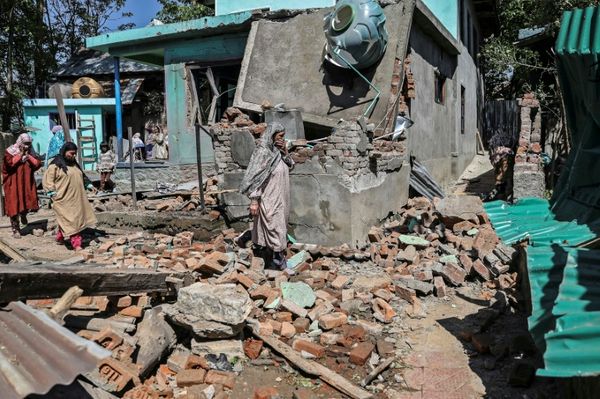The story so far: The recently-concluded second part of the Budget session of the Parliament had Telecom Minister Ashwini Vaishnaw responding to questions on call drops. Member of Parliament from Narasaraopet (Andhra Pradesh) Sri Krishna Devarayulu Lavu and Karakat (Bihar) MP Mahabali Singh raised concerns on call drop incidents in the country. Separately they asked the Telecom Minister if the government maintained any data of such occurrences and the measures taken to mitigate them. Further, the Karakat MP asked the Minister to apprise the house if the government proposed to cancel the license of telecom regulators failing to address the concerns. The Telecom Minister replied in negative.
Mr. Vaishnaw informed the House about the Telecom Regulatory Authority of India’s (TRAI) monitoring mechanism for telecom service providers (TSPs) specific to their Licensed Service Area (LSA) as a whole. This is done using Quarterly Performance Monitoring Reports (PMRs) submitted by the service providers against the benchmarks for quality parameters laid down by the regulator. The report for the quarter ending December 2021 noted that all TSPs excluding BSNL in West Bengal LSA were in compliance to the benchmark.
Parameters for assessing TSP performance
TRAI has prescribed two stringent parameters for assessing call drops in mobile networks, they are Drop Call Rate (DCR) pertaining to Spatial Distribution and Temporal Distribution. The mentioned parameters are prescribed under ‘The Standards of Quality of Service of Basic Telephone Service (Wireline) and Cellular Mobile Telephone Service (Fifth Amendment) Regulations, 2017’.
Spatial Distribution measures prescribe that at least 90% of cellphones in the network should perform better than the benchmark figure of ≤ 2% on at least 90% of days.
The Temporal Distribution measure adhering to a benchmark figure of ≤ 3%, require that at least 97% of the cellphones perform better than the benchmark figure on at least 90% of the days.
Further, the telecom regulator has an Interactive Voice Response System (IVRS) for obtaining direct feedback from subscribers on call drops. According to the Telecom Minister’s written reply tabled in the Lok Sabha, around 5.67 crore subscribers have individually contacted since December 2016. Further, 73.61 lakh subscribers have participated in the survey. The feedback received is shared with service providers for initiating corrective actions in a time bound manner. 1.73 lakh individual cases of call drops have been resolved and around 7,956 Base Transceiver Station (BTS) have been installed by the service providers with respect to complaints received via IVRS.
In simple terms, as pointed out by consulting firm Gartner, BTS sends and receives radio signals to and from mobile devices, converting them to digital signals that it passes on the network to route to other terminals in the network or to the Internet.
Financial disincentive
The TSP have to explain their stance should if they have not been able to meet the benchmark figures. After considering the explanations, TRAI imposes financial disincentives for failing to comply with the same. The regulator introduced a revised graded Financial Disincentives (FD) structure with respect to DCR parameters in 2017. The disincentives vary according to the deviation from the specified benchmark.
The TRAI’s consultation paper presented prior to the 2017 amendment mentioned the TSPs’ suggestion of not according financial disincentives on marginal violations of key performance indicators (say less than 10 to 15%). The service providers cited factors such as heightened competition in the market with comparable price structures, and quality of service being a major differentiator. Other factors for disregarding financial disincentives include new site restrictions, EMF issues, fibre cut, theft cases, boundary and fringe cells, GSM spectrum non-availability, and interference.
Additionally, it noted that certain services may not be able to maintain quality of services owing to high mountainous terrains, remote areas and other factors. The paper argued that such instances must be considered on a case-to-case basis and cannot be the basis for any blanket relaxations.
Separately, there were also suggestions that incentivisation would be in the best interest of customers and help improve quality of services. “They (TSPs) were also of the opinion that there should not be any financial disincentives if the quality-of-service benchmarks are breached as choices are available to consumer and market forces would ensure improved quality of service,” the paper argued.
Assessment and improvement
The consultation paper suggested that the benchmark assessment must be technology-agnostic. All technologies deployed by the service provider in an area must be treated equally and assessed as part of a single network.
For Radio Link Technologies (RLT), the consultative paper noted, there may be cases wherein the drop may be for a short period of time such as the user taking a lift or passing through a tunnel. TRAI mentioned some service providers resorted to configuring them on the higher side affecting dropped call statistics. The alleged ‘masking technology’ prevents a call from disconnecting despite there being poor or no signal. “...the calls which were supposed to be registered as call dropped by the network may be registered as call released (disconnected) by the user as the user would initiate release of call because of poor quality of service,” the regulator said. The revised measures ask the service providers to keep a record of all BTS exceeding the specified RLT value (more than or equal to 48).

Telecommunication Minister Ashwini Vaishnaw, in his written reply tabled in the Lok Sabha on April 6, apprised the house of the several policy initiatives undertaken to facilitate infrastructure growth for delivery of quality services. These include permitting trading/sharing/ liberalisation of spectrum, permitting passive & active infrastructure sharing, making government land/buildings available for installations of towers, etc. He added that TSPs installed around 16.82 lakh additional Base Transceiver Stations (BTSs) for 2G/3G/4G- LTE services between March 2014 and March 2022 across the country.
The reply mentioned that the Dept of Telecommunications holds meetings with TRAI and TSPs from time to time on the issue. The last such meeting was held in January this year.







